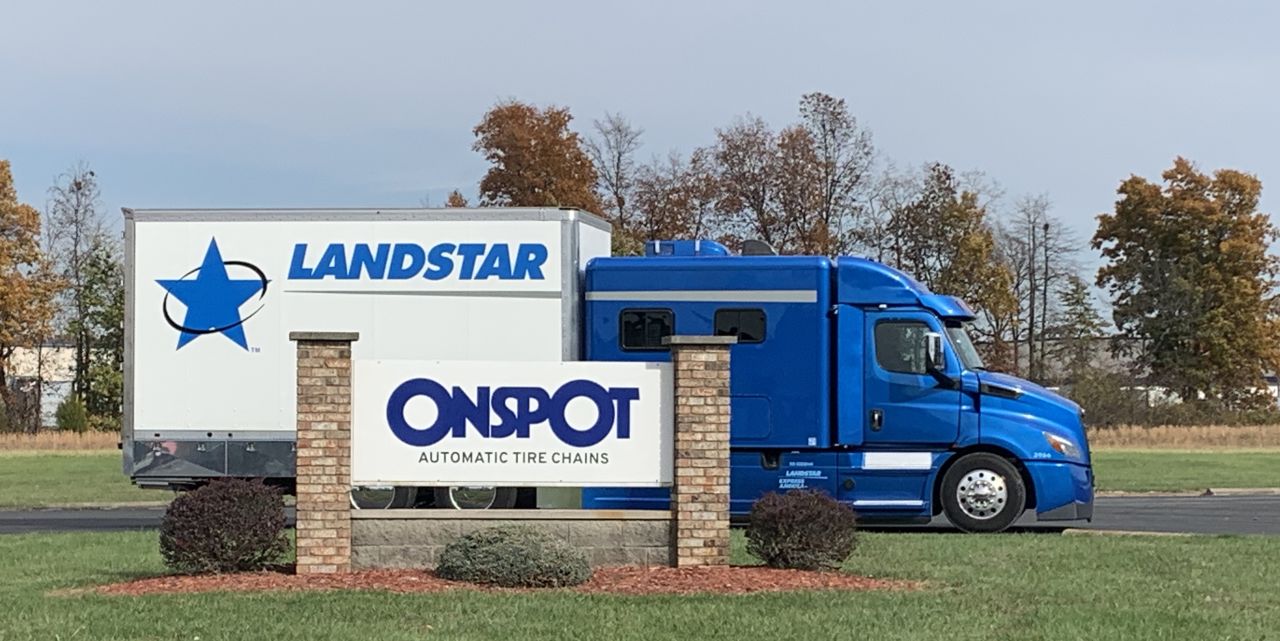It's a Team's Life

Yes, We Chain
We have all heard of automatic chains but don't know for sure how they work. I will give you my take after helping install them and seeing the chains work. The install begins long before arriving at the shop; things must be measured under the truck. There are so many options for axles, suspensions, brakes, and other items mounted under a truck, that a good measurement of certain areas around the axle needs to be taken and sent to the manufacturer. There is a form that gives good pictures and directions of where and how the measurements need to be taken, be as accurate as possible.
There is a plate the chain assemblies mount to that uses the U-bolts on the suspension. The U-bolts will need to be replaced as they will be longer to account for the thickness of the mounting plate. This is the first step, remove U-bolts and install new ones with the mounting plate and torque the nuts to spec. Next is to mount the chain cylinder assemblies, these come from the manufacturer with the chain wheels installed on the swingarm, and adjust for proper alignment. The chains are air operated, so lines must be routed to each air cylinder from an air/electric solenoid. The solenoid must be mounted in an area where an air supply is accessible but in an area out of road debris damage.
A switch from the factory or a supplied switch needs to be connected to the solenoid to provide 12 volts to the solenoid when the chains are needed. Now to test. Functions as designed, awesome. That is the install very simplified.
Automatic chains are not only for use in the western states but can be useful in icy docks, rest areas that haven't been plowed, on-ramps that are slick, well you get the picture. Some say they will not chain-up, that's OK, but you still need to get to that safe parking spot, these will get you there safely. Should you decide to chain up, you can do it from the safety and comfort of the cab. Keep moving 2-25 mph to engage. Disengage between 2 and 35 mph, travel no more than 35mph with chains engaged. If you are already stuck, spin tires and engage chains once chains bite stop spinning and drive on. Always engage and disengage the chains while moving.
Once you decide, you need chains, flip the switch. Air is fed through the solenoid to the chain cylinders. The cylinders extend to move the swing arm in an arc to bring the chain wheel into contact with the inside sidewall of the tire. Rotation of the tire will cause the chain wheel to rotate using centrifugal force to throw the chains under the tire giving the needed traction.
I need to describe the chain wheel to understand it better. Imagine an aluminum wheel about 6" in diameter, with a rubber outer ring, a bearing in the center to allow free spinning. On this wheel, there is bolted a steel ring with short lengths of chain welded to it. These are specially made chains that, when twisted in the right direction, will become a straight length of chain. The chain wheels are sided, left and right, and painted red and blue so, if removed, can be restored to its proper side. If installed opposite, the chains will not work as designed.
The best part of having automatic chains is that we do not have to wake our partner when we deploy the chains and I, Bob get to stay dry.
Bob & Linda Caffee
TeamCaffee
Saint Louis MO
Expediters since January 2005
Expediting isn't just trucking, it's a lifestyle;
Expediting isn't just a lifestyle, it's an adventure;
Expediting isn't just an adventure, it's a job;
Expediting isn't just a job, it's a business.
